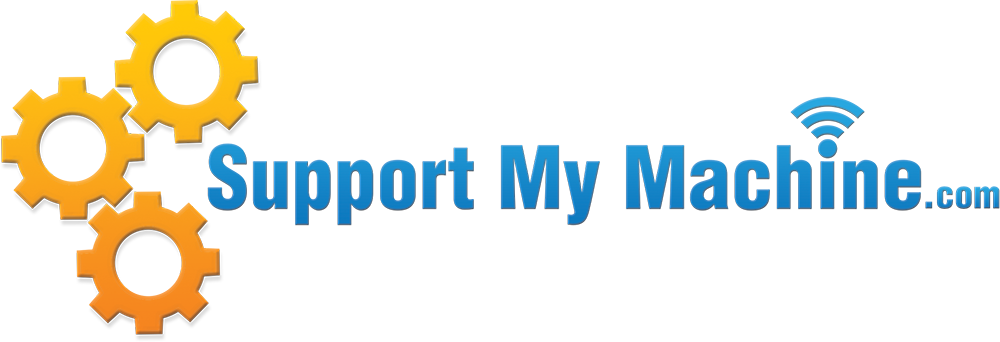April 3rd, 2020 Many companies in many industries rely on us at Premier Automation for our engineering, service and support to supplement their staff, troubleshoot difficult problems and to design solutions for their needs. In the current situation, many sites are not allowing visitors and vendors on-site to mitigate the risks to their employees and outside personnel which is taking away access to resources that they had at their disposal prior to the COVID-19 pandemic. Many solutions exist and thinking outside the box may provide opportunities to continue business as usual through these difficult times. Remote Access
Remote access has been around for a very long time. Many larger companies employ it and manage it from their internal IT department and some smaller companies use off the shelf products to allow outside contractors and vendors to assist with problems both to save on travel costs but also to get quicker resolutions to their problems. Remote Access Contraints
There are a handful of remote access constraints that keep companies from deploying remote access. These constraints can be bureaucratic, security and safety concerns and infrastructure. Many IT departments will not let vendors remote in to do work because of company policies. As the world has changed from this pandemic, companies need to re-evaluate these policies and decide if they should be changed at least for the near future to keep operations running smoothly. These IT policies normally concern security of the IT system at the facility. One way to work around this is to use remote access devices at the machines that are made for the industrial world. Most of these run off of 24 Volts DC, common inside a control panel, and a key switch or selector switch can be used to remove power to these devices when not in use. A customer would contact the vendor to provide access and once a scheduled connection was planned, the key would be turned to allow the remote access device to power up. Most of these devices have logging of who was in the system and when. Once the vendors work was complete, the device can have power removed and be unavailable until needed again. An example of one of these devices is the EWON routers. Working with your IT department, these devices can be pre-programmed at our facility to meet your network needs and shipped to you for future access. Safety is another concern. Who wants to be working on a machine and have someone that can’t see the machine making changes to it’s functionality? To mitigate this risk, if a machine change is being made in the code, having someone with authority on the other end of the line monitoring the machine and ensuring personnel are clear during changes, may allow a company to open up it’s policies for the near future. Infrastructure concerns include weak wireless and cellular signals in plants or lack of ethernet cabling to machines. Many machines in the past were installed with no access to the business network. With the recent demand for connected systems over the last few years most new equipment has this capability. There are a couple options for this constraint. If cellular signals are strong enough at the machine, there are cellular versions of industrial remote access routers that can be installed. Also, using a cellphone hot spot to provide the internet access to a wireless remote access router will work in a pinch. Lastly, maybe now is the time to invest in getting these machines that exist as islands at your plant connected for support and future innovations in IoT and Industry 4.0. Lastly, with tools like Google Duo available on cell phones, plant personnel that may not have the knowledge to troubleshoot a complex problem can connect to equipment locally and be the eyes and ears of the engineer or vendor working remotely. This will increase the ability of the plant personnel through some nice on the job training opportunities and still allow the outside party to work through the problem. What Kind of Remote Access and Support Do I Need?
There are two ways remote support can be provided. Remote access to a computer that is connected on the plant floor that is running the proper software for debugging and troubleshooting, or remote access directly from the remote personnel’s computer to the equipment being worked on. The advantage to connecting to a computer on the plant floor is, with most remote access methods, the mouse and keyboard activity along with the changes made to the system can be seen by the local personnel at the machine. Doing this while in communication over a phone can make this a safe operation. The downside is that many companies do not have the software that they need to perform changes to their machines. Many companies rely on a firm like Premier Automation to own this software and to make a trip to their site when changes are necessary. Standard remote access programs like TeamViewer and Google Remote Desktop can be used in this case which are available economically or even for free. Also, the company VPN can be used to facilitate these connections if one exists taking advantage of the built in Windows Remote Desktop platform. The second option, connecting direct to the machine from a remote computer, allows the easiest use by the remote party. This is where the industrial remote access routers come into play. They provide VPN access to the customer site through a secure interface. The engineer can use their computer and software to connect to the machine. It is much more efficient for the engineer as screen update rates are normally better and the bulk of the information for the screen update is residing locally. We Are Here When You Need Us
If pondering the options of what is out there and how you are going to maintain support of your industrial machines at this time, feel free to contact us and we will discuss the options with you and provide guidance so that we can continue to offer our world class services to you even when socially distanced.
March 28th, 2020 The answer to this is a difficult one. There are many ways this could end. One is a vaccine is available and life goes back to normal, although this may not happen for even a few years. The more likely result is we get through this surge of infections, and once free to do so, companies pick up the pieces and try to get back to production as they did before. But can they if social distancing strategies make the way they did business before obsolete, using multiple workers to complete tasks in groups where exposure may be likely? Will workers be comfortable coming to work where they risk exposure to a new hazard that isn’t just dangerous to themselves, but also to their family’s? Automation and Robotics Role In The Solution
Many companies are looking to quickly accelerate their investment into Automation and Robotics. With the rise in collaborative robots, and the market for them getting more competitive day by day, with the bigger industrial robot makers now creating competitive collaborative designs, the prices will come down and the features and capabilities in these robots will grow. These robots and systems can quickly be implemented to allow a single worker to do the work of many, therefore allowing the social distancing that is possible to become the norm for the near future. We at Premier Automation are experts in automation and robotics and have many years of experience in general automation, industrial robotics and collaborative robotics. We have a dedicated engineering, design and implementation teams in Robotics, Automation and Drives and the ability to tie all of these areas of expertise together to provide solutions to help you socially distance your employees during their work experience. Here are some ideas of how that may look on your plant floor. Palletizing and Machine Tending
In operations where more than one employee is involved in palletizing or machine load and unload operations, a collaborative robot may be the answer. There are many ways to use a collaborative robot to do this type of work in a way that is safe to the nearby worker, allowing a single worker to perform the work of many. Many people think that collaborative robots are slow or weak, but using combinations of robotics and lift assist type equipment, collaborative robots operate at higher payloads and complete much heavier tasks. Also, most collaborative robots, with proper area monitoring, can run at speeds approaching what traditional robots can do when humans and other obstacles are not in the general area. Part Assembly
If workers are assembling parts on a standard assembly line, putting robots on the easiest tasks in between worker areas creates needed separation and may be a great investment at any time. The availability of collaborative robots, standard industrial robots and also the very quick and very affordable Scara type robots may make sense in your operation. Multiple Operator Equipment
Many industrial machines in steel, plastic, glass and other core industries use the standard button panels and HMI systems to start and stop equipment, set parameters and are worked on by multiple workers on multiple shifts. Now might be the time to have two operator operations work on opposite sides of the line or one worker upstream and one downstream. Having an additional control panel or HMI may be the solution here with the screens and buttons being cleaned between shifts. Another option here is to invest in making more of the machine functions automated so that a single employee can operate the machine or even “set it and forget it” and walk away while it continues to produce needed product. Bring Your Own Device To Work
Some companies in the last few years have started bring your own device to work policies where they allow employees to bring their own iPAD or tablet, own phone, own computer, etc. to work to do work related tasks. Either implementing this idea or providing company supplied tablets to workers on the plant floor could allow employees to connect remotely to HMI screens and machine controls. Although most tasks they need to do from the control panels and HMI’s require them to be able to see what is happening, this may be a way that they can distance themselves from the community petri dish of the screens and control panels that multiple employees are touching every day. Conclusion
The world has changed and, if it ever goes back to what it was in 2019, will be slow to become normal again. Drive-In movie theaters are probably going to pop up all over the country while standard movie theaters that replaced them long ago may shutter. Grocery and restaurant delivery services will flourish and live music night clubs and indoor concerts may be a thing of the past for a while. In the manufacturing world, companies willing to accept the changes that are occurring, deal with them, and make their employees safer through investment on their plant floors will survive while those who don’t will lose employees to the safer job opportunities and fail. Premier Automation would like to help you succeed in this new world and we have the talent, expertise and workforce to help you through this.




